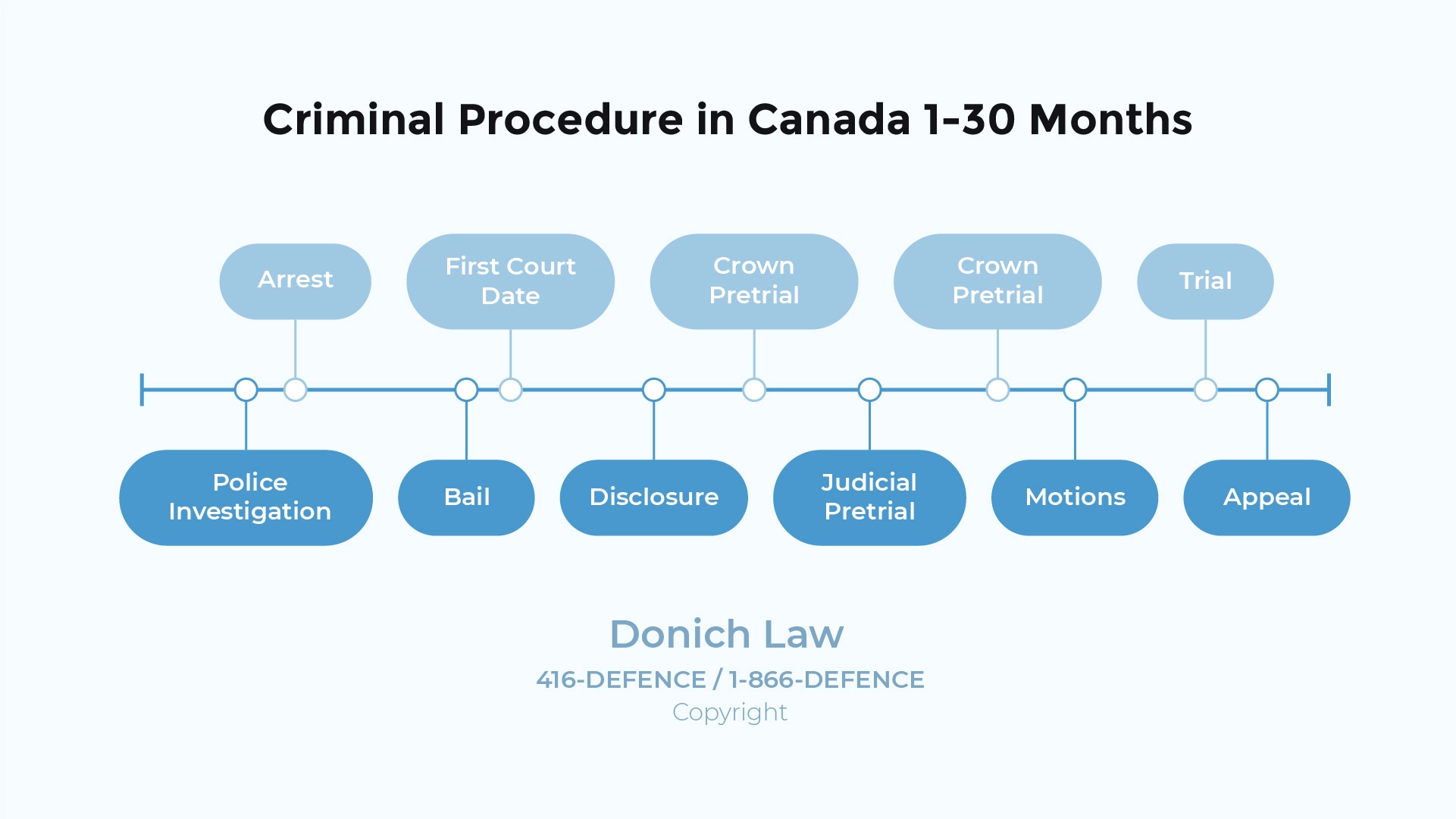
Defend Criminal Negligence Charges
Frequently Asked Questions
Criminal negligence causing bodily harm is an offence in Canadian law that addresses the serious consequences arising from an individual’s or a corporation’s failure to comply with expected standards of care, resulting in physical harm to others.
What is Criminal Negligence Causing Bodily Harm?
Criminal negligence causing bodily harm is a significant offence under Canadian law, addressed specifically in Section 219 and Section 221 of the Criminal Code. This offence demonstrates the legal obligation of both individuals and corporations to act responsibly to ensure public safety. This law is a protective measure to penalize and publicly denounce careless behaviour that is likely to lead to physical harm.
Section 221 of the Criminal Code is invoked when a person’s actions show a gross deviation from the expected behaviour of a reasonable person, in a way that results in bodily harm to another. Section 219 further clarifies criminal negligence as behaviour that markedly diverges from the care a reasonable person would exercise under similar circumstances, characterized by a wanton or reckless disregard for the lives or safety of others. This legislation also applies to corporate entities, holding businesses accountable for maintaining safe environments. If a company fails to ensure safety and an employee is injured as a result, the company may face charges under this law.

- CP24: Civil Sexual Assault Lawsuit at St. Michael’s in Toronto.
- Global News Morning Show: Sentencing Arguments in Assault case of Dafonte Miller.
- Breakfast Television: Role of Mental Health in Court Proceedings.
- Global News National: Bruce McArthur will not serve consecutive sentences.
- CBC Radio: Interview with Mayor John Tory and Jordan Donich on CBC Radio.
- CTV News National: Handgun ban supported by majority of Canadians: Nanos survey.
- Global News: How difficult is it to get a legal handgun in Canada.
- CP24: Sentencing Hearing for Chair Girl.


Civil Negligence vs. Criminal Negligence
In Canadian law, civil and criminal negligence are different in both process and outcome. Criminal negligence, overseen by police and the Crown, does not require any action from the victim; it addresses severe deviations from reasonable behaviour and could result in a prison sentence. Conversely, civil negligence cases are brought forth by the victim or their family to claim monetary damages. These cases are based on the “balance of probabilities,” where the plaintiff must demonstrate that it is more likely than not that the defendant was negligent. So, while criminal negligence aims to punish, civil negligence focuses more on providing monetary restitution to the victim. This structure ensures accountability and reparation.
How does the Crown Prove Criminal Negligence Causing Bodily Harm?
Under Canadian law, the Crown bears the burden (or onus) of proving criminal negligence causing bodily harm beyond a reasonable doubt. This is the highest standard of proof in the justice system, echoing the serious implications of a criminal conviction. To meet this burden, the Crown must sufficiently demonstrate each element of the offence as set out in Section 219 of the Criminal Code.
There are several elements that the Crown has to prove:
Duty of Care: The Crown needs to establish that the accused owed a duty of care to the complainant. This is typically applicable in situations where the person’s actions could foreseeably harm others, i.e., when driving a vehicle or operating heavy-duty machinery.
Breach of Standard of Care: The prosecution needs to show that the accused’s actions departed significantly from what a reasonable person would have done under similar circumstances. This involves proving that the accused acted with wanton or reckless disregard for others’ safety.
Causation: It must be demonstrated that the accused’s actions were the direct cause of the victim’s bodily harm. This means that “but for” the accused’s negligent behaviour, the injury would not have been sustained.
Nature of the Harm: The Crown must establish beyond a reasonable doubt that the bodily harm endured by the victim was severe enough to detriment their health or comfort and was more than simply “transient or trifling.” In other words, the damage done needs to go beyond petty harm.
Example
Consider a scenario where a construction site manager fails to enforce required safety gear usage among workers. If a worker suffers a severe injury because of this failure, such as a head injury from falling debris, the Crown could also hold the construction site manager liable for not enforcing safety protocol, as a rational manager would have done.
Stages of the Criminal Justice System

Will I go to Jail for Criminal Negligence Causing Bodily Harm?
There are a number of considerations to determine if jail time will be a part of one’s sentence.
Legal Definition and Penalties: Criminal negligence causing bodily harm is defined as acting with wanton or reckless disregard for the safety of others, leading to bodily harm. Under Section 221 of the Criminal Code, the offence can be treated as an indictable offence with a potential sentence of up to ten years in prison. Alternatively, it can be handled as an offence punishable on summary conviction, carries a maximum penalty of two years less a day imprisonment and/or up to a $5,000 fine.
Sentencing Principles: Sentencing for criminal negligence causing bodily harm considers the circumstances of the offender and the offence. Canadian courts follow principles such as proportionality, rehabilitation, deterrence, and reparation. The sentence should reflect the seriousness of the offence and the level of culpability of the offender.
Aggravating and Mitigating Factors: Factors that might exacerbate the severity of the sentence, known as aggravating factors, are a previous criminal record, the level of harm sustained, and whether the negligence was especially egregious. On the other hand, mitigating factors might be the absence of a criminal record, demonstrating remorse, and circumstances that reduce the offender’s culpability—another word for moral blameworthiness, including mental illness.
Parity in Sentencing: The sentence should be reasonably comparable to penalties imposed in similar cases. This upholds consistency and fairness in the legal system.
Maximum Penalty is Seldom Applied: Courts do not usually impose the maximum penalty for criminal negligence causing bodily harm, unless the circumstances are particularly egregious. For instance, cases that deal with numerous victims or extreme negligence might demand harsher penalties.
What’s a Crime in Canada?
How to Fight a Criminal Negligence Causing Bodily Harm Charge
There are several ways to defend a criminal negligence causing bodily harm charge in Canada. Here are some relevant considerations:
- The Crown has to prove guilt beyond a reasonable doubt. This standard of proof tells us that it is better for the justice system to let a guilty person go free than to convict an innocent person of a crime.
- Withdrawal of charges can occur if there is not enough proof.
- Challenging the Validity of Evidence – the defence can put the reliability and admissibility of the evidence in question.
- Presenting exculpatory evidence – the accused can bring forth evidence that shows that they are not guilty beyond a reasonable doubt of the crime charged.
- Using legal defences – the accused can present certain defences like necessity, duress, or mistake of fact. These defences involve the defence showing that their actions were reasonable given the circumstances at the time, or that they reasonably held an incorrect belief that led them to do, or fail to do, a specific action.
Law Newbie is a free AI research assistant that can help you safely answer questions about criminal law.




Recent Cases
R. v. C.T. [1989] 1 SCR 1392
In the case of R. v. C.T., the Supreme Court of Canada (SCC) explored the nuances of mens rea (criminal intent) required to convict under the charge of criminal negligence causing death. The central issue was whether the defendants, who chose to use prayer as a treatment for their son’s ailment instead of insulin, possessed the necessary criminal intent to be found guilty of this crime.
Central to the case was the analysis of the defendants’ genuine belief in the healing powers of God. The Court examined whether this belief, despite appearing irrational to some, could negate the mental intent element required for criminal negligence. The sincerity and depth of their faith, and how this influenced their decision-making regarding their son’s health care, were scrutinized.
The Court considered whether a reasonable person, placed in the defendants’ situation and sharing their beliefs, would have foreseen the life-threatening risk to their son from discontinuing insulin. This involved a careful reconciliation of the interplay between religious faith and conventional medical practices.
The SCC’s decision to acquit the defendants in R. v. C.T. was based on the finding that their authentic belief in the efficacy of prayer over medicine negated the presence of mental intent required for a conviction of criminal negligence causing death. The Court held that the defendants did not possess the necessary criminal intent, as they sincerely believed their actions would not harm their son. As such, the Court acquitted the defendants in a way which affirmed and validated their religious beliefs.
R. v. M.W., [1989] 1 SCR 1436
The case of R. v. M.W. is essential to understanding criminal negligence within Canadian criminal law, particularly regarding the necessary mental state, or mens rea, to establish such negligence. The defendant M.W., after consuming alcohol, dangerously approached a hayride, consisting of several tractors and wagons, at high speed. Waite’s actions led to him fatally striking four individuals and injuring another. The central legal issue debated in the SCC was whether the mens rea for criminal negligence should solely rely on an objective test of the accused’s actions or also consider a subjective assessment of the accused’s awareness of the risks.
The Court concluded that criminal negligence encompasses both an objective standard—assessing whether the conduct was a marked and substantial departure from how a reasonably prudent person would act—and a subjective element, considering the accused’s actual awareness or willful blindness to the risk their conduct posed.
This decision underscores the importance of both objective and subjective assessments in determining criminal negligence, reflecting a nuanced approach to mens rea that requires considering both the nature of the conduct and the perpetrator’s mental state. The ruling has significant implications for future criminal negligence cases, ensuring that defendants are assessed not only on their actions but also on their awareness of the potential dangers those actions could cause. The case therefore serves as an important reference point for the interpretation of criminal negligence in Canadian law, emphasizing the responsibility individuals hold to act prudently and to consider the safety of others in their actions.
R. v. J.H., 2023 SCC 2
In this case, the defendant appealed against the constitutionality of a mandatory minimum sentence for discharging a firearm with disregard for the presence of others. This case reached the SCC after the defendant challenged the four-year mandatory minimum sentence as cruel and unusual punishment under section 12 of the Canadian Charter of Rights and Freedoms.
The key issue centered on whether this mandatory minimum sentence was disproportionate and thus unconstitutional under section 12 of the Charter, which protects individuals from cruel and unusual treatment or punishment. The appellant’s argument included a hypothetical scenario involving a young person who discharges an air-powered weapon at a house, which could not actually perforate the residence’s walls, arguing that in such cases, the mandatory minimum sentence would be grossly disproportionate.
The SCC found the mandatory minimum sentence for the offence to be grossly disproportionate and therefore unconstitutional. The Court stated that the sentence infringed upon the Charter and could not be justified under section 1, which allows certain rights to be limited if it is demonstrably justifiable in a free and democratic society. As a result, the Court declared the mandatory minimum of no force or effect and reinstated the original sentence of three and a half years imposed by the sentencing judge.











